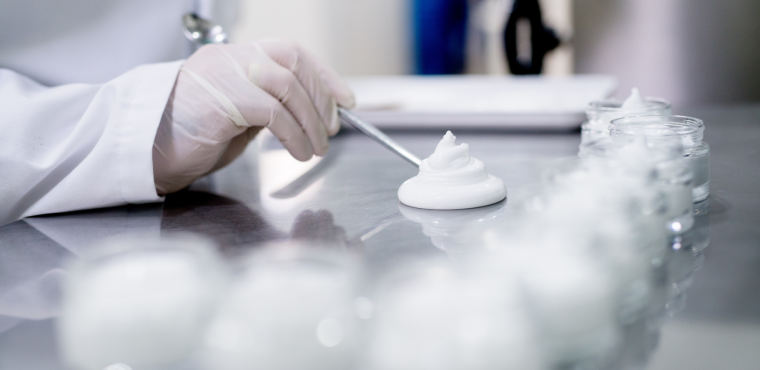
Jul 29, 2019
What is Retinaldehyde and How Is It Used?
Retinaldehyde Uses
A cure against aging is often the driving force behind customers spending more on a skin care product. For that reason, some of the most popular and talked-about skin care products are those that contain anti-aging ingredients. Providing your customers with a quality anti-aging skin care product will ensure a surge in your audience numbers and guarantee customer loyalty.
Anti-aging Magic: What Are Retinoids?
Retinoids, the number one anti-aging ingredient, is a vitamin A derivative. Vitamin A has the extraordinary ability to reverse the signs of aging, increasing nutrients and boosting collagen production in the skin to improve elasticity. It helps reduce wrinkles and lines on the skin.
Scientific studies on the retinoid Tretinoin have shown that it can reduce the appearance of wrinkles, fine lines, and pigmentation after only 12 weeks of use. Tretinoin, which is pure retinoic acid, is generally a prescription-only retinoid, and therefore the retinoids that are available over the counter are weaker, but also gentler.
Retinoids need to convert to retinoic acid for the skin to be able to absorb and use the ingredient. There is a wide range of skin care products containing retinoids available on the market, available as different types, concentrations, and formulations.
Different Types of Retinoids
Most retinoids on the market are natural but some, like Adapalene and Tazarotene, are synthetic. For private label skin care it is best to use a natural retinoid that is available without a prescription. These are Retinyl Palmitate, Retinol and Retinaldehyde. The strength of the retinoid depends largely on the type. All these different retinoids need to be converted by skin enzymes into retinoic acid, which is the only active form of vitamin A before the skin can absorb them. The closer the compound is to retinoic acid, the easier it is to convert, and the more effective or stronger the retinoid is. The body converts Retinyl Palmitate into Retinol, Retinol into Retinaldehyde, and ultimately Retinaldehyde into Retinoic Acid. The conversion process looks like this:
Retinyl Palmitate -> Retinol -> Retinaldehyde -> Retinoic Acid
When you directly apply a product that contains retinoic acid, your skin will be able to use it immediately, since no conversion is necessary. However, keep in mind that this can often damage the skin and cause irritation. Retinol first needs to be converted into retinaldehyde and then retinoic acid. Retinol is therefore deemed weaker since there are two steps that need to occur before the skin can use it. It is also unclear how much of each retinoid actually gets converted with each step in the oxidation process, which is why retinaldehyde is a much better form than retinol or retinyl palmitate.
While each of these types of Vitamin A derivative is proven to help fight aging in skin, the size of the molecules makes it challenging for the skin epidermis to absorb when applied topically. Research shows that retinoic acid and retinaldehyde are 500 times more active than the others, which means that smaller amounts can be used, and that is then absorbed by the skin to achieve fantastic results.
How Retinaldehyde Works
Of the two very effective forms of vitamin A, retinaldehyde is preferred to retinoic acid. Once retinaldehyde is converted into retinoic acid, it cannot convert back into a form of vitamin A that can be stored, since retinoic acid cannot be stored by the body.
Applying retinoic acid directly to the skin could cause irritation due to overstimulation and over-exfoliation. This does not happen with retinaldehyde, because it is the immediate precursor to retinoic acid. When it penetrates the epidermis, it regulates the amount of retinoic acid produced and only converts enough to perform its function, storing the excess retinaldehyde in adipose cell tissue.
Retinaldehyde is tolerated differently by different people, and therefore you should carefully select the concentration of retinaldehyde in your skin care product. According to a study in PubMed, concentrations of 0.05 and 0.1% were tolerated the best and could be used continuously for up to 3 years by most subjects. For short term treatments with retinaldehyde, higher concentrations may be considered. A concentration of 1% was tolerated well by 70% of subjects in their study, while a 0.05% concentration fared slightly better. Keep this in mind when you develop your skin care product and determine the market for it.